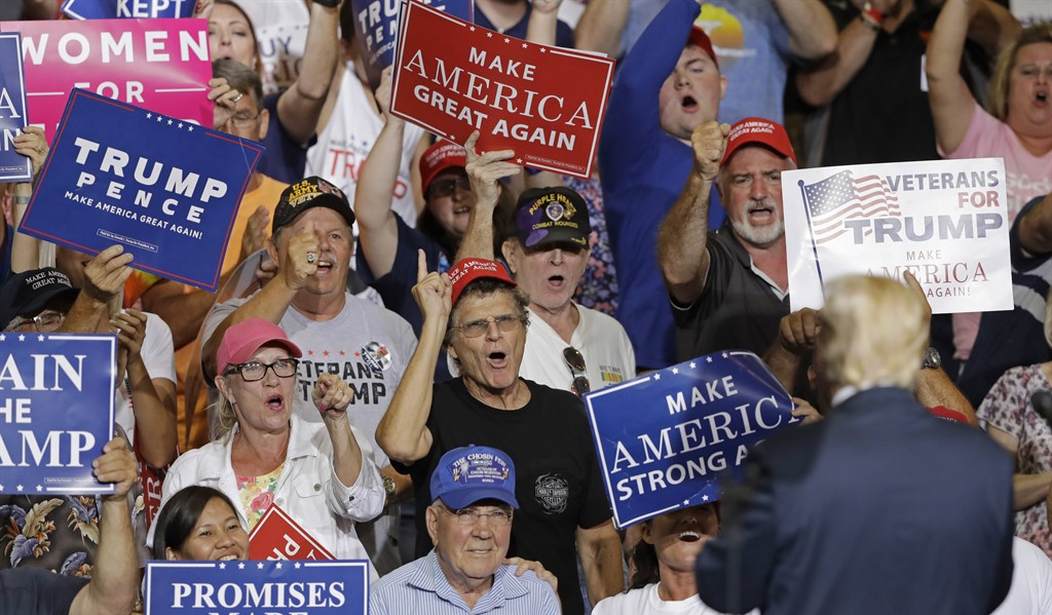"The Trump base is far bigger & stronger than ever before," the president declared in a series of tweets Monday morning, and that "will never change." Many observers were quick to point out that this assertion isn't borne out in the polls.
Such nitpicking, however, overlooks a more important part of this story. In the 1990s and 2000s, Trump had political ambitions, but the traditional two-party system and the media landscape served as impenetrable barriers. It was the breakdown of the old ways that opened a path for someone interested in breaking them down even more -- in part by embracing a new base of mostly non-college-educated whites.
Traditionally, Republicans have relied on white, middle-class, white-collar, married suburbanites. The American Communities Project identifies 106 "urban suburbs" -- the relatively affluent near-in suburbs of major cities. In 1984, Ronald Reagan won 92 of them. In 2016, Trump lost 89.
As Politico's Charlie Mahtesian recently chronicled, Republicans have been steadily losing market share in these crucial districts and counties for decades, as suburbanites become a bit more liberal and a lot more hostile to Republican populism on cultural issues.
Georgia's 6th Congressional District illustrates the trend. Mitt Romney carried the highly educated suburban district by 23 points in 2012. Trump squeaked out a win there by one point in 2016. That same year, Republican Rep. Tom Price won re-election, receiving 61.7 percent of the vote. In the recent special election to replace Price after he was named secretary of Health and Human Resource, Republican Karen Handel beat Democrat Jon Ossoff by less than four points.
Just as inexorably, the Democrats have been watching white, blue-collar workers, the heart of the old Franklin D. Roosevelt alliance, migrate to the GOP for some time now. Democrats bet heavily on the growth of minorities, particularly the black vote, urban liberals, immigrants and millennials. This coalition delivered two historic victories for Barack Obama.
Recommended
But opposition to Obama accelerated the defection of rural, working-class and older whites to the GOP cause, costing Democrats 63 House seats and roughly 1,000 elected offices nationwide.
Now, both parties have similar dilemmas: Their new bases are too small to guarantee electoral success but too strong to allow fundamental rethinking of how the parties do business.
The Democratic base of hard-core liberals and Trump "resisters" is not a majority coalition. But it is the dominant ideological force within the party (and mainstream media), and hence the leadership is very reluctant to broaden the party's message. The new push for zero tolerance of pro-life Democrats is just one obvious illustration of the bind the Democrats are in.
Trump, meanwhile, has dedicated the first six months of his presidency to keeping his base happy. That's in part because he can't get legislation through Congress, so he tweets red meat to the faithful instead.
His media cheerleaders increasingly define conservatism not as adherence to any program, but as personal loyalty to Trump. Hence the rising call from figures such as the recently suspended Fox News host Eric Bolling to purge the party of "RINOs" (Republicans In Name Only) who are critical of the president. If Trump had an approval rating in the high 50s instead of numbers that bounced around in the 30s, following this advice would not threaten the fragile GOP majority.
The Democrats have settled on economic populism as their unifying theme, not so much because that's where all the passion is but because they can't agree on any other agenda that would enlarge their coalition. The GOP, in turn, is shrinking its ideological commitments -- and appeal -- and focusing instead on populist rage and the president's cult of personality. Both courses leave vast swaths of the electorate up for grabs.
As a result, there's the potential for an opening in 2020 for some opportunistic figure -- Mark Zuckerberg? Michael Bloomberg? -- from outside the beleaguered and sclerotic party system who could forge a coalition from both the traditional Democratic and Republican columns, much as Emmanuel Macron did in France. An independent candidate always seemed like a pipe dream in America's two-party system. But so did Trump's candidacy until not very long ago.

























Join the conversation as a VIP Member